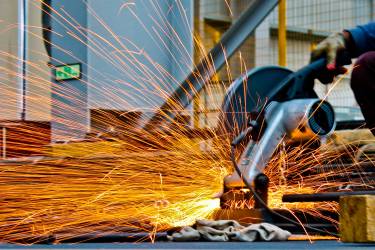Industrial metals are not having a successful session today, but among aluminum, copper and nickel, zinc (ZINC) contracts are seeing the biggest declines, trading nearly 1.4% lower. The market is pricing in continued weaker demand and sizable supply. Meanwhile, in China, zinc production grew by 7.2% in the first four months of 2023, according to data from the Shanghai Metal Market. Additionally, a stronger dollar is putting pressure on industrial metals. Tomorrow's catalyst for volatility could be the PBOC's decision on interest rates in China - insufficient stimulation of the economy could promote deeper declines.
- Zinc has fallen nearly 40% from local peaks in January, when the euphoria around the opening of China's economy was enormous. China is the world's largest consumer of zinc, and the industrial metal's prices are cyclical - correlated with the overall global economy. The raw material is losing mainly due to weak macro data from China;
- In May, LME data indicated an increase of 18,050 t in inventories, rising to the highest level since September 2022 near 63,500 t. In addition, zinc is weighed down by seasonality - construction activity tends to slow down in the summer. Demand for steel in the spring, in China, came in well below expectations. In addition, production is also expected to rise in Europe, where energy prices for steel mills have fallen significantly;
- In May, Citigroup expected an oversupply of 147,000 tons in the global zinc market this year; Reuters analysts in May estimated a surplus of 45,000 tons. Meanwhile, the International Lead and Zinc Study Group (ILZSG) believes the zinc market will have a slight oversupply of about 45,000 tons this year (versus a forecast of 150,000 tons in October). Demand in China is expected to grow 2.1%, below the estimated 3.1% y/y production growth;
- Production is also expected to increase in Europe, where energy prices for steel mills have fallen significantly. Possible rises may be supported by the unstable situation in Myanmar, where the suspension of mining is causing supply concerns, or the PBOC's decision to stimulate the economy more aggressive in China.

In Q2 2023, zinc became a metal readily shorted by financial institutions - with the first preponderance of short positions since Q1 2020. The main reason for the positioning was the prospect of oversupply and the negative surprise of China's opening, which put additional pressure on contracts. Source: LME, Reuters Looking at the ZINC chart, on the H4 interval, we see that the main short-term resistance in the form of the SMA100 (black line) has been overcome, and the average has turned from resistance into support, which is currently being tested. If there is a price rebound, we can expect another similar pattern of upward structure. Higher volatility may take place tomorrow, when the PBOC will decide on the annual interest rate. Source: xStation5
Looking at the ZINC chart, on the H4 interval, we see that the main short-term resistance in the form of the SMA100 (black line) has been overcome, and the average has turned from resistance into support, which is currently being tested. If there is a price rebound, we can expect another similar pattern of upward structure. Higher volatility may take place tomorrow, when the PBOC will decide on the annual interest rate. Source: xStation5
ข่าวเด่นวันนี้:ตลาดเคลื่อนไหวระมัดระวัง รอข้อมูลเงินเฟ้อและการตัดสินใจของ FED
🛢️ ก๊าซธรรมชาติใกล้แตะระดับ $5
ข่าวเด่น: ราคาน้ำมันแกว่งตัวจำกัด หลังตัวเลข EIA 📈
ทองแดงทำสถิติสูงสุดใหม่ตลอดกาล! 🚨


